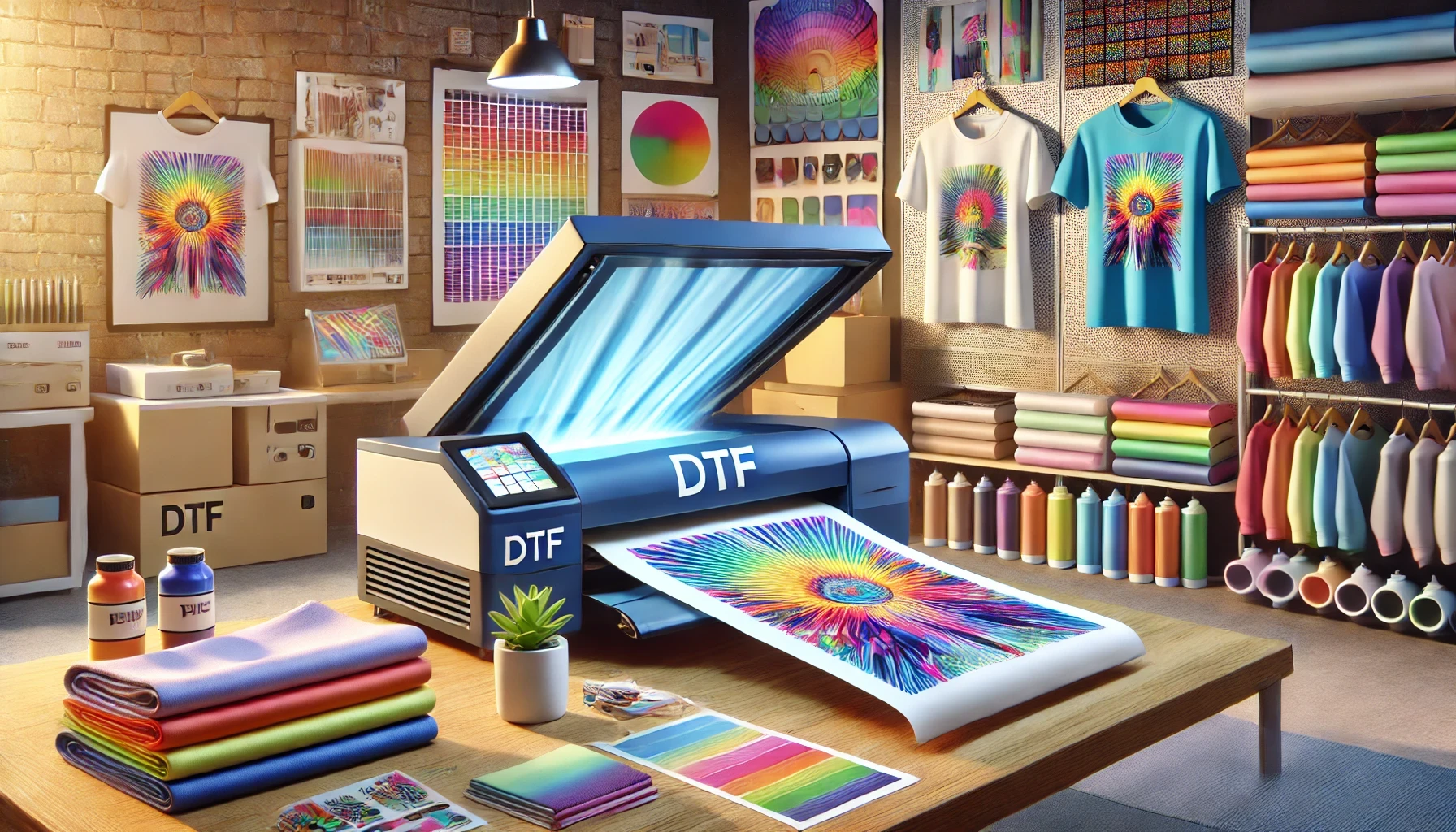DTF Transfer: A Simple Guide
Introduction to DTF Transfer
DTF (Direct to Film) transfer is a fresh method for printing designs onto clothing and other items. Unlike traditional screen printing or direct-to-garment (DTG) printing, DTF transfer works on a variety of fabrics. This makes it an appealing choice for those looking for versatility and durability in their prints. As a result, DTF printing is rapidly gaining popularity due to its ease of use, robustness, and affordability.
How DTF Transfer Works
The process of DTF transfer involves several straightforward steps. First, a design is created or selected on a computer and then printed onto a special film using a DTF printer. While the ink is still wet, a powder adhesive is sprinkled onto the printed film. This adhesive is then set onto the film using a heat press, a process known as curing. Once the adhesive is cured, the film is placed onto the fabric, and the design is transferred using the heat press again. This step-by-step approach ensures that the design adheres well to the fabric, resulting in a durable and vibrant print.
Advantages of DTF Transfer
One of the main benefits of DTF transfer is its versatility. It works on a wide range of fabrics, including cotton, polyester, and blends. This means that whether you’re printing on a t-shirt, hoodie, or sportswear, DTF can handle it. Additionally, DTF prints are known for their durability. They can withstand numerous washes without significant fading or cracking, making them ideal for items that will be worn and washed frequently. Moreover, DTF transfer is cost-effective, making it suitable for both small custom orders and large production runs.
Applications of DTF Transfer
DTF transfer is used in various applications, particularly in custom apparel. It’s perfect for printing on t-shirts, hoodies, and sportswear. Beyond clothing, DTF transfer is also popular for creating promotional products like branded bags, caps, and accessories. Its ability to produce detailed and vibrant prints makes it a great choice for special items such as workwear, uniforms, and personalized gifts. This wide range of applications showcases the flexibility and practicality of DTF transfer in the printing industry.
Common Issues and Solutions
Despite its many advantages, DTF transfer can sometimes encounter issues. One common problem is clogged printheads. This can be prevented by regular cleaning and using high-quality inks. Another issue is improper adhesion, which can occur if the adhesive powder is not applied correctly or if the film and fabric are not adequately heated. Ensuring the correct amount of adhesive and proper heating can solve this problem. To maintain print quality, it’s important to keep both the printer and heat press clean and well-maintained.
Conclusion
In summary, DTF transfer is an innovative and versatile printing method that offers numerous benefits. It provides durable, cost-effective prints that can be applied to a variety of fabrics, making it an excellent choice for custom apparel and promotional products. If you are looking for a reliable and flexible printing method, DTF transfer is definitely worth considering.
FAQs about DTF Transfer
- How long do DTF prints last?
- DTF prints are very tough and can last through many washes without much fading or cracking.
- Can DTF be used on dark fabrics?
- Yes, DTF printing works well on both light and dark fabrics.
- What kind of ink is used?
- DTF printing uses special pigment inks made for fabric printing.
- How to take care of DTF prints?
- Wash garments inside out in cold water and avoid using bleach to keep the prints looking new.

